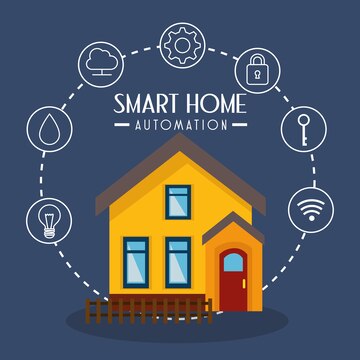Smart-home technology has mushroomed over the past two decades. While this innovation began as a reservation adopted by the wealthy, it has become more affordable to small and medium-size homeowners.
So how does a smart-home work? Let’s look at a brief history of smart-home technology, its evolution, current state, and future projections.
History of Smart Homes
The ability to remotely control home devices began as early as 1975. The X10 pioneered the home automation process as the first platform, allowing homeowners the luxury and convenience of controlling appliances using radio frequencies.
Fast forward to 2005 when the -Wave home automation system streamlined technology and introduced a more efficient, interference-free inter-device connectivity. In 2010, the evolution of machine learning further improved this technology by enabling devices to create a knowledge board that tracks home activities and programs responses.
The introduction of home kits that could control entire processes happened in 2014. Voice-activated device assistance then made the limelight later that year, with speakers that can manage and integrate into several devices using simple voice commands.

Innovations are still coming up every year, and the direction of smart-home technology is a fascinating prospect. These new systems are top-notch, and they seamlessly integrate into home systems.
How Does a Smart Home Work?
Smart Technology bases its operation on improving convenience in your home. This tech allows you to automate basic processes and operate appliances to improve functioning. You can develop a smart home ecosystem that consolidates your lighting, heating, and even security systems to work from one central control panel.
In principle, a smart-home system uses wireless communication to perform specific tasks. You are looking at a system programmed to do everything, including monitor and save energy and utility costs.
Modern home networks use cloud technology to store critical data, allowing them to establish a valuable knowledge base and back up your data, mainly security data footage. These networks only require an app in your smart device to operate and are essentially DIY controlled and set up. This app allows you to communicate with various devices.
This network also allows devices to communicate and collaborate, making your smart ecosystem more efficient. This collaboration also enables you to schedule automated responses. Essentially, you can set a system that unlocks your locks and switches on your lights automatically.
Types of Home Automation Networks
There are two main types of home automation networks. The one you choose will depend on which one suits your overall needs.
App-Based Smart Home AutomationThis system uses your Wi-Fi system to connect to the cloud. It is the most highly used system, pocket-friendly, operates efficiently, and is a convenient solution for home use. App-based systems connect your home network to a remote server that stores information and relays it through an app on your smart device.
The beauty of this system is that you can use it to control almost every appliance in your home, and you can customize it to coordinate with all your devices. All you need is an internet connection to control the devices remotely from any location.
This system has its pitfalls. It requires several apps for elaborate home systems. Luckily, some innovations have consolidated all these functions into one app.
Other than that, app-based automation is still easily accessible, functions more effectively, and has a simple setup process.
Central Control Smart Home AutomationThe control system allows you to merge all your functions from one panel, meaning you can schedule locks, lighting, sprinklers, and even play music simultaneously. Unlike the app-based system, central control does not require a dozen apps, is easy to operate and convenient.
This system is favored mainly by companies that need to centralize all their functions and upscale homes with many automated devices. This system can also be integrated into your smart device and operated remotely.
Central control systems are convenient but pricey. Unlike app-based automation, this system requires professional installation. However, if you are not on a tight budget, this system will work very well for you.
They have a limitation-you can only pair devices compatible with the system. This pitfall means you may not include every device in your home. Other than that, it is still an excellent system to have.
Verdict
Home automation is at the top of emerging technologies, and with over 50% of people in the U.S. adopting it, it is only a matter of time before it becomes a household name. If you have considered smart-home automation, know it is worth the investment. There is no time like the present.